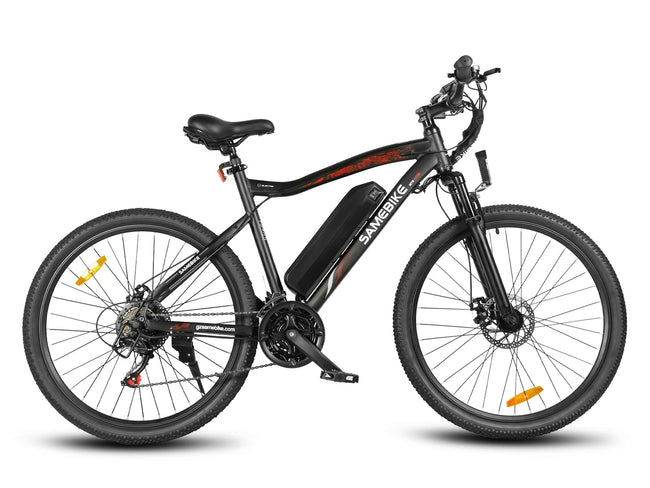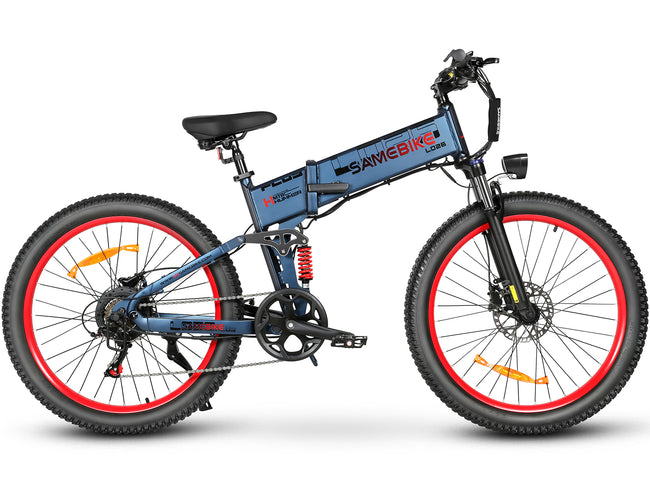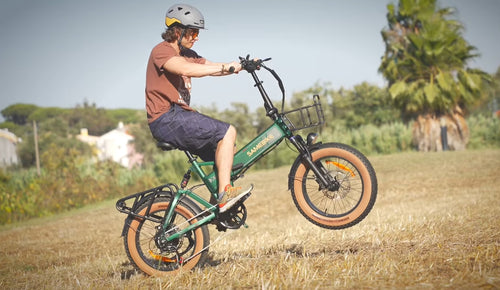While electric bicycles provide users with an easy way to exercise outdoors, enjoy fresh air, and conquer all kinds of terrain, they also have a positive impact on the environment, not only helping to reduce their carbon footprint,It also doesn’t release dangerous chemicals into the air like cars do.
In fact, when you compare e-bikes to cars and other forms of transportation, e-bikes win overwhelmingly, especially when it comes to energy and environmental impact. According to TÜV Rheinland Energy GmbH’s calculation and assessment of the carbon footprint of various types of transportation, the results are:
According to TÜV Rheinland Energy GmbH’s calculation and assessment of the carbon footprint of various types of transportation, the results are:
About 75% of an e-bike’s carbon footprint comes from manufacturing, 15% from actual use, and the rest from transportation, packaging and recycling. Over the entire life cycle of an electric bicycle, its carbon dioxide emissions are approximately 14g/km.
If you only consider the time an e-bike spends on the road, the electricity consumption will only result in an average CO2 value of 2-5g/km. By comparison, cars emit around 150g of CO2 per kilometer, while public transport emits 60 to 80g of CO2 per kilometer, according to the Federal Environment Agency. E-bikes have significantly lower emissions than all other modes of transport.
So what if it compares to a traditional bicycle? Do e-bikes really use less energy? Most people would agree that riding on muscle power alone is by far the most environmentally friendly way to do it. It has no battery, no charging, and is lighter. Surprisingly, however, riding an e-bike uses less energy and has a smaller impact on the environment than riding a traditional bike.
Food energy consumption is an important consideration when comparing the environmental impact of e-bikes and conventional bikes. A person riding an average 30-mile daily commute on a traditional bicycle may burn an additional 800 calories per day, which will increase the amount of carbon dioxide emitted into the air each day through the production, packaging, transportation and preparation of this extra food energy every day. Getting a bicycle moving, whether electric or traditional, requires about 5-15 watt hours per kilometer. On average, each unit of mechanical energy transferred to the pedals by a conventional cyclist comes at the expense of 28 units of primary energy (i.e. fossil fuels), a ratio of 1:28. In comparison, the energy ratio of an electric bicycle using lithium-ion batteries is about 1:8.8.
However, one of the concerns some people have about the "green" effect of e-bikes is how to dispose of discarded e-bike batteries. If discarded batteries are not properly disposed of, dangerous chemicals can seep into the soil, creating safety hazards.

In fact, more and more related companies and recycling facilities are emerging. They specialize in recycling various types of batteries, and lithium-ion batteries used in electric bicycles are the easiest to recycle, because lithium is used in laptops, mobile phones, etc. It has been used extensively in the manufacture of products.
Nickel-cadmium batteries are more complicated, in part because landfills do not allow the use and recycling of cadmium batteries of any type. Because of this, handling nickel-cadmium electric vehicle batteries is often a greater challenge. However, now in the United States, the processing of lithium-ion or nickel-cadmium rechargeable batteries can be processed through the official channel CALL2RECYCLE.
Human travel causes more than one-fifth of global carbon emissions. Every year, more than 30% of carbon dioxide, 80% of carbon monoxide, and more than 50% of nitrogen oxide emissions are produced by motor vehicles. However, drivers of many vehicles actually commute relatively short distances. Because of this, if every American whose commute was less than 5 miles switched to an e-bike one day a week, the effect would be the equivalent of removing 1 million cars from the fleet immediately.
So any time people choose to ride an e-bike instead of driving, they are doing their part to reduce their carbon footprint. Until better ways are found to reduce our carbon footprint, the popularity of e-bikes will continue.







































